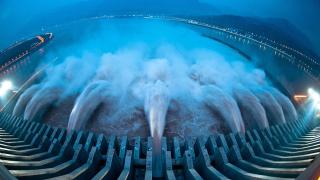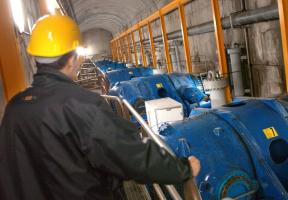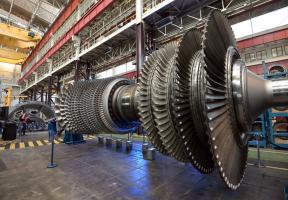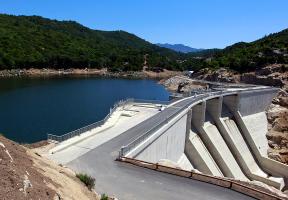Barriers to Hydropower
10 min read
Hydropower has significant development potential, especially in Africa, Latin America and Asia. While the investment required as well as human and environmental impacts limit the outlook for large dam-building projects, the future seems promising for small hydro.

© AFP - Water being released at the gigantic Three Gorges dam on the Yangtze River in China.
Hydropower has many advantages and today accounts for more than 80% of renewable power generation. Annual output stands at around 3,500 TWh, which is about 16% of global power generation. Generating capacity of up to 15,000 TWh is technically feasible and would cover three-quarters of the world’s current demand.
With such a promising outlook, what are the obstacles hindering the development of this energy?
Safety Requirements
The design of the hydropower plant itself must take into account the risk of dam failure. The Malpasset disaster, which caused more than 400 deaths near Fréjus in southern France in 1959, and the Vajont tragedy in Italy, which killed 2,000 people in 1963, are ingrained in the collective memory.
There are two main types of dam. Gravity dams are built entirely on solid ground and can withstand the retained water’s full force. Arch dams are curved and supported by their rock walls, which must be regularly inspected.
Surveys need to be performed to determine the dam’s ability to withstand earthquakes and, more generally, the stability of the ground around the reservoir. The dam’s ability to withstand flooding must also be examined. All dams today have spillways to stop them giving way. In addition, dams must be constantly monitored for water seepage in the body of the dam or below it that could buckle it.
Human and Environmental Impact
The construction of a new reservoir floods large areas of land, meaning that people are displaced in some extreme cases. For example, the construction of the Three Gorges Dam on the Yangtze River in China, which began in 2006, led to close to 1.5 million people being resettled. The construction of a dam can also have significant impacts on the region’s economic activity, particularly farming, both upstream when creating the reservoir and downstream because the areas bordering the river dry out.
Another factor is that dams also retain silt carried by the river water that supplies the reservoir. In the 1960s, the construction of the Aswan Dam on the Nile in Egypt led to a significant lowering of silt content in the water downstream. Hundreds of kilometers from the dam, the river delta started to recede. Farmers had to use more fertilizer to maintain crop yields due to the lack of silt. This phenomenon can also be seen along the Rhone River, impacting the Camargue coastal area in France.
In addition, building a dam can have serious environmental implications if the consequences are not properly considered. For instance, it can hinder the migration of some aquatic species, affect water tables and harm plants and wildlife.
Future Opportunities
In the future, smaller-scale, more environmentally friendly ways of using may be developed. These include small hydro projects producing 0.1 to 10 MW, pico hydropower units with capacity of 10 to100 kW, which use natural river currents and water wheels to produce energy, and tidal and wave energy.
In developed countries, there are thousands of sites that are untapped due to a lack of technologies that achieve a reasonable installed cost. In France, small hydro plants nevertheless produce 7.5 TWh a year, which is 10% of the hydropower generated nationally. These energy production techniques use the natural water cycle. They are less invasive, making them more environmentally friendly.
Sources:
- - International Journal on Hydropower and Dams
- - ENR (in French only)

















